Prior to the 2018 CQ WPX RTTY Contest in February, I tested my converted 2-element SteppIR yagi to find high SWR on all bands. An SWR scan with the antenna set on 15 meters showed the antenna resonated at a much higher frequency. After performing a Calibrate, the antenna would not resonate anywhere. It was basically dead. I did resistance and voltage checks and they were OK.
The following weekend, on Saturday, February 17, I took a 3 hour break from the ARRL DX CW Contest and went up the tower to investigate. The plan was to remove the antenna for a major overhaul. The antenna is to be repaired, refurbished, and converted back to 3 elements. It’s a project I had wanted to do for a long time. This antenna was purchased in 2010 and was originally installed as a 3-element yagi with the 30/40 meter loop. It was converted to 2 elements without the 30/40 loop in 2012 after being damaged in Hurricane Isaac. This antenna is only used on a second radio in contests.
The tower is only 35′ and the antenna sits on a PVRC mount so it was not a difficult job to remove the antenna by myself. While on the tower, I shook the fiberglass poles on the DRV EHU and heard the jingling of the copper tape inside. This meant there had been a failure and part of the tape was still in the tubes. I made a video it.
While on the tower, I was shocked and dismayed to find a hole in the top of the DRV (driven) element housing unit (EHU). Looking inside the hole showed the bottom of the stepper motor. What could have caused this type of damage? Could the result of the hole be the reason why the antenna failed?
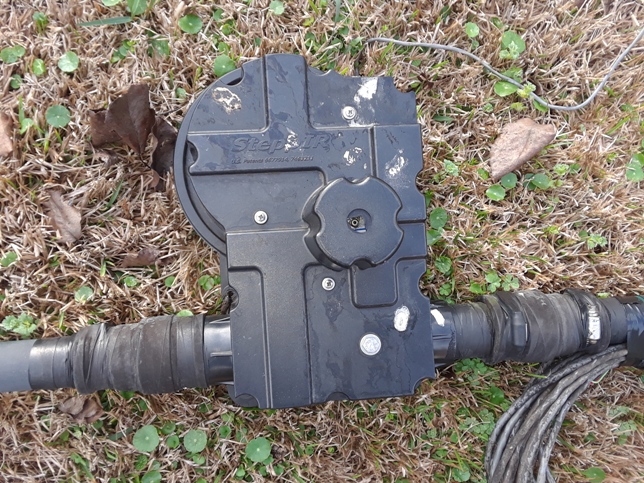
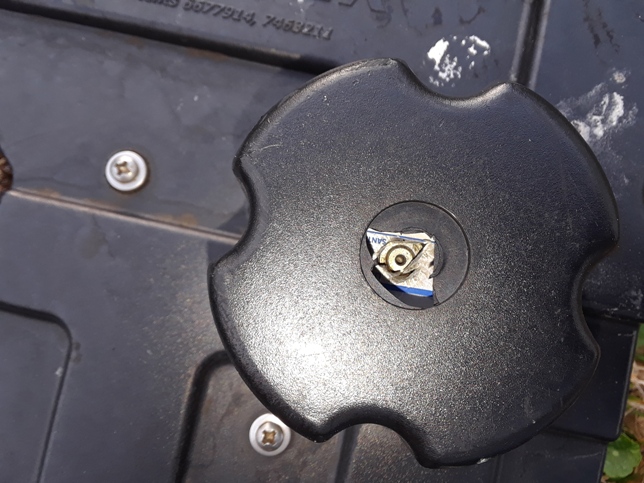
I then removed the fiberglass poles to find the tape was extended about 18″ on one side and several feet on the other side.
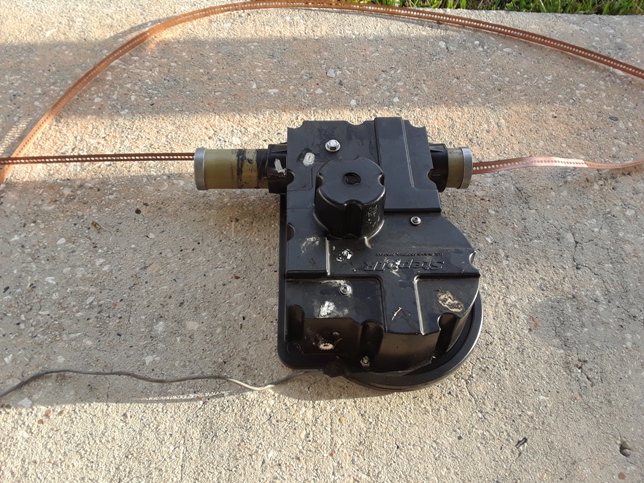
The passive element (DIR-1 in this case) was not without issue either. The tape was extended out about an inch from the EST (element support tube) on one side while the other side was OK.
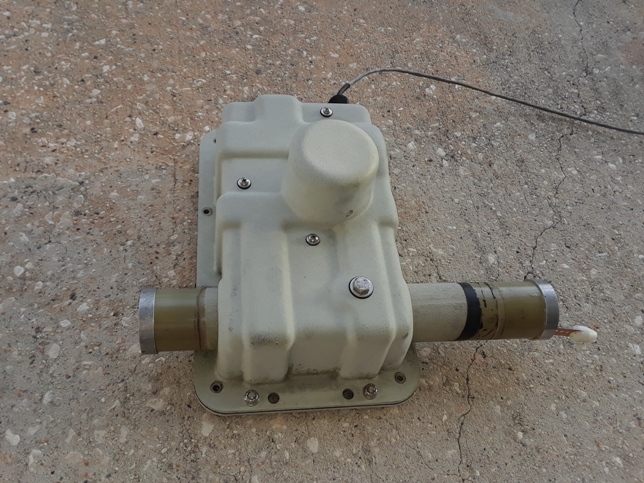
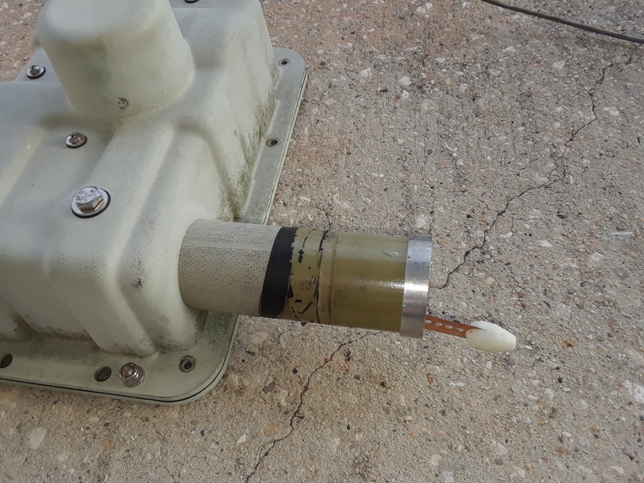
The fiberglass poles showed severe UV damage from seven years under the relentless Louisiana sun.
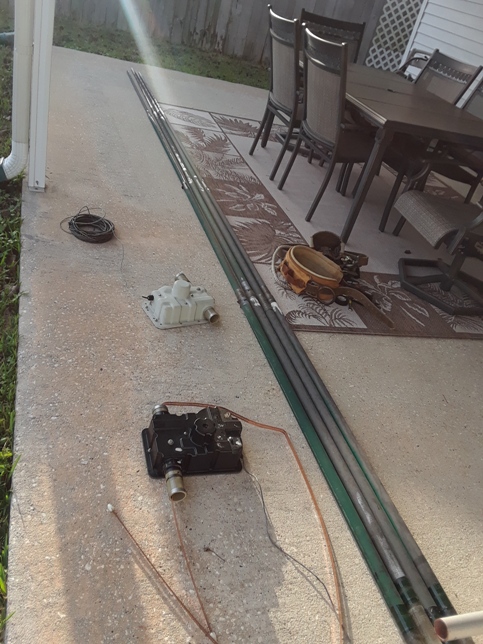
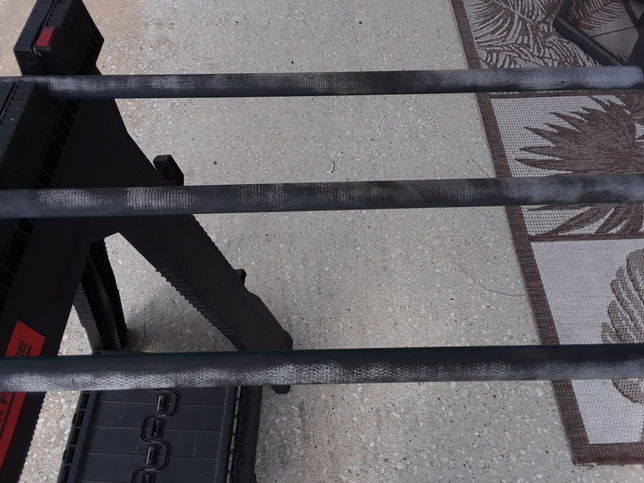
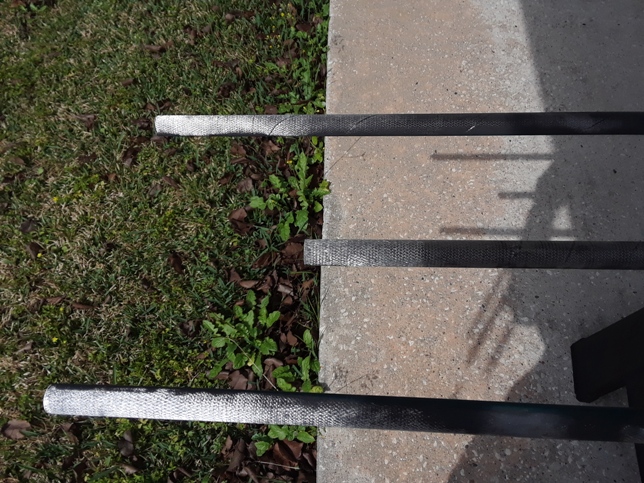
I was expecting the DRV EHU to be full of water when I opened it, but it wasn’t. I don’t remember the last time it had rained, but it was bone dry and there was no apparent sign of water damage. Better yet, there was no spaghetti mess of copper tape inside. This made me very happy as I am hoping to reuse the copper tapes.
There were pieces of grass inside. Perhaps a bird had pecked the hole and tried to somehow make a nest. A woodpecker? I had never heard one around here before.
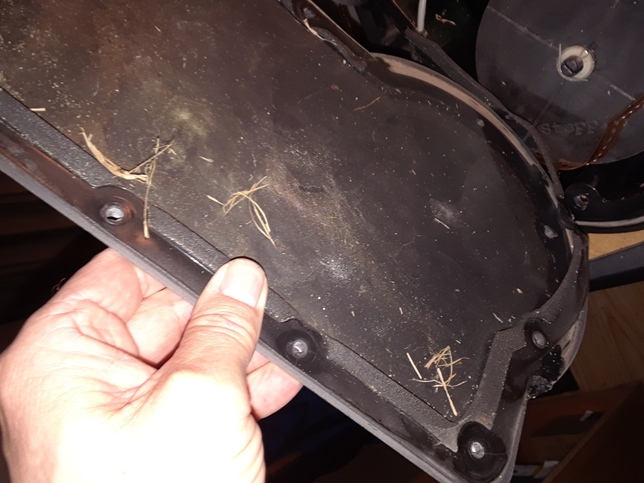
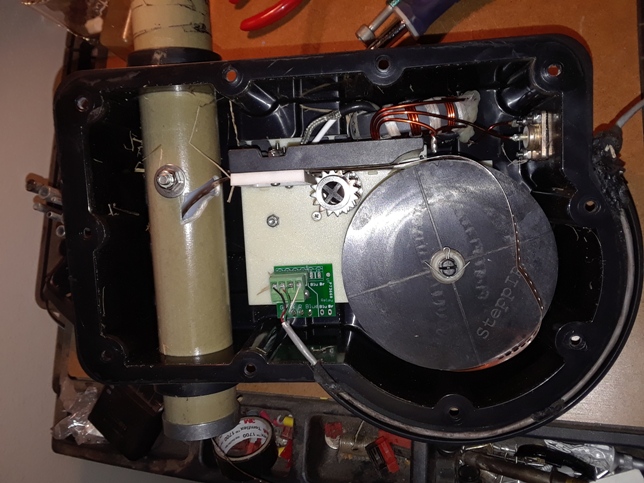
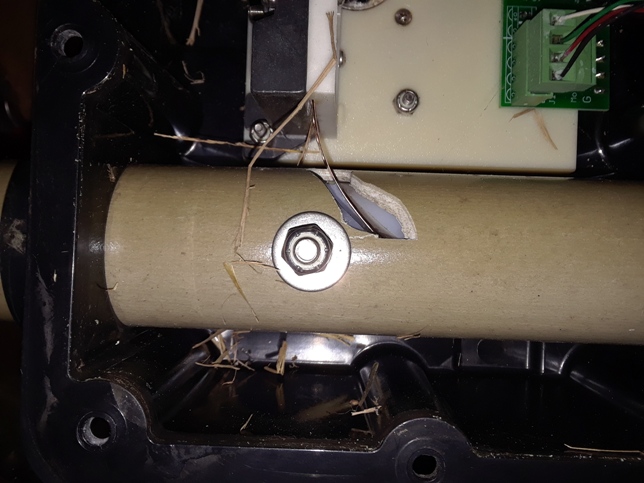
Closer inspection of the DVR EHU showed one of the tapes had jumped the sprocket.
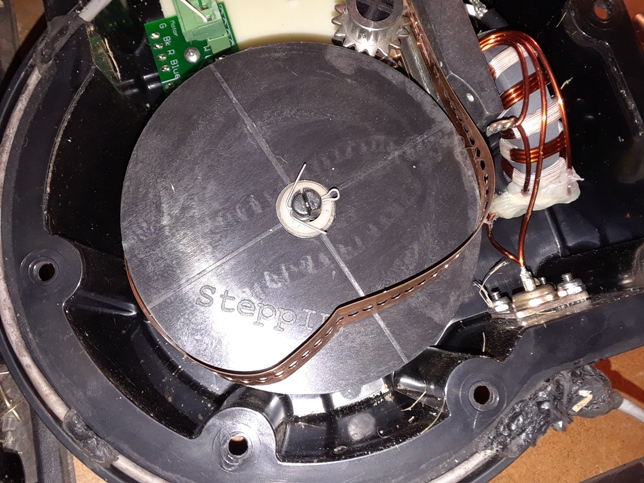
After examining all the pieces, it was evident that the root of the problem was not inside either of the EHU’s. The problem had to be blockage inside the fiberglass poles. A close examination of the fiberglass poles showed blockage in 3 of the 4 tubes. With the tubes sitting on sawhorses and looking into the large end of the pole, I could only see light at the end of one pole. The tape in the DRV EHU jumped the sprocked because it was being stopped inside the tube.
I used a fish tape into the small end of the poles to loosen the debris then used the jet position on the nozzle from my garden hose to flush the debris out the larger end of the poles.
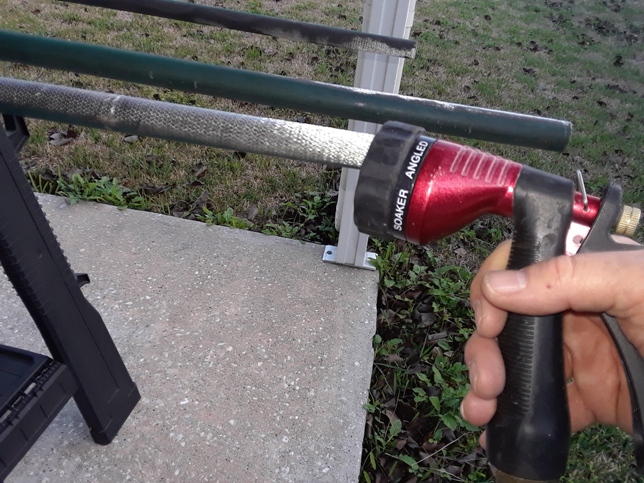
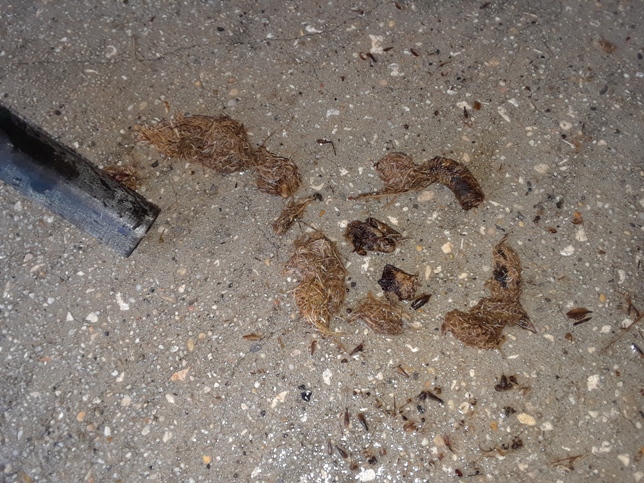
After spraying water through the poles, I put a pen flashlight in the smaller end of each pole to ensure each tube was clean of debris.
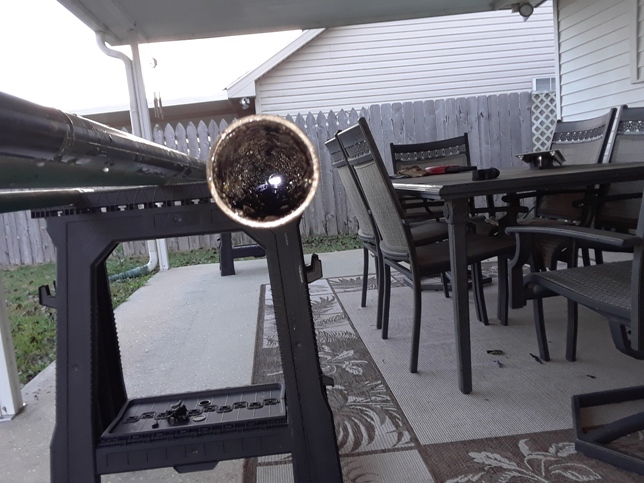
Later I examined the DIR-1 EHU to find it was in good shape. The tape is extended out on one end, but I will take the tapes off and rewind them on the spring during the refurbishment.
Root Cause of Failure: Not having a breathable piece of material installed at the open ends of the fiberglass poles allowed insects to bring in grass and other debris. This debris caused blockage in the poles. When the one of copper tapes on the DRV EHU met the blockage, it caused the tape to jump the sprocket and the antenna would no longer work. In my opinion, the hole in the DRV EHU is incidental and had no direct involvement in the failure.
It’s a valuable lesson learned. I was lucky there was not major damage. I can now go ahead and refurbish the antenna and make it 3 elements again at a low cost. The recommendation from members of the SteppIR reflector was to use pieces Scotch Brite pads glued inside the ends of the poles to keep insects out.